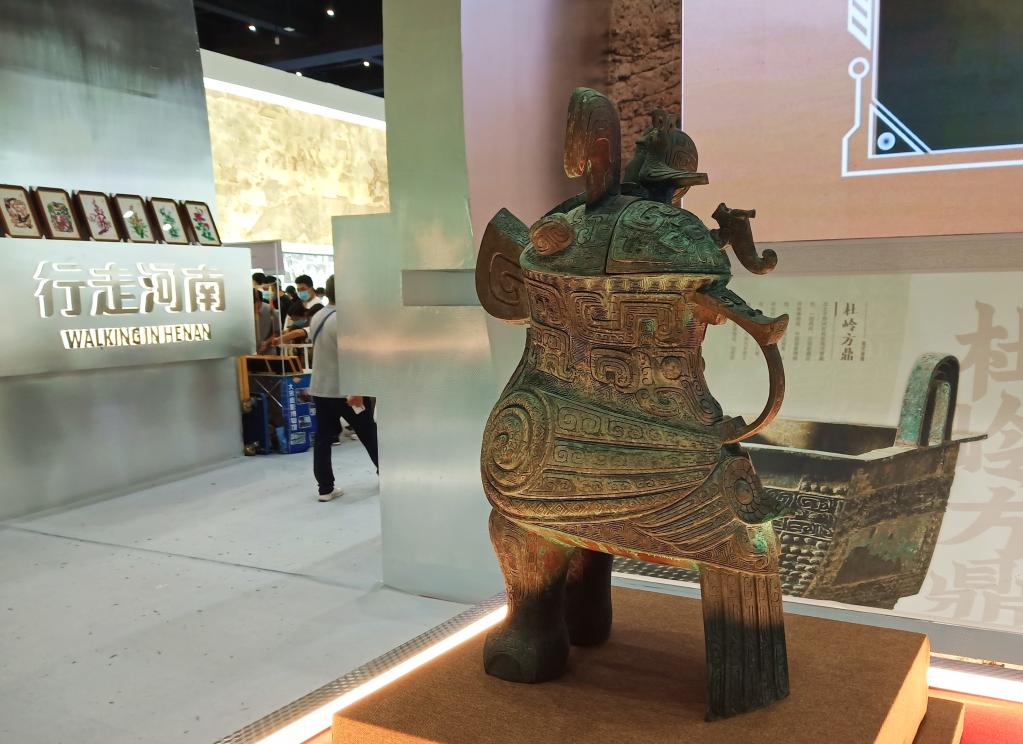
Fuhao Owl Zun: Looking Back at the Peak of the Bronze Age
Owl is a general term for owls in ancient times. In the Shang Dynasty, owls were loved and worshipped, and were considered to be divine birds that symbolized bravery and wisdom.
The Fuhao Owl Zun, which is listed as one of the "Nine Treasures of the Museum" of Henan Museum, is 46.3 cm tall and weighs 16 kg. It has a history of more than 3,000 years. It is one of the representative bronze works of the late Shang Dynasty and the earliest bird-shaped bronze wine vessel discovered in my country so far.
It is in the shape of an owl with its head held high, a feather crown on its head, two eyes wide open, wings together, and three fulcrums formed by its thick feet and drooping wide tail. It is not only novel in shape, but also decorated with animal face patterns, cicada patterns, Kuilong patterns, coiled snake patterns and other patterns.

According to the development of production tools and technology, major human civilizations in the world have experienced the Stone Age, Bronze Age, Iron Age, etc. In my country, the Bronze Age corresponds to the Xia, Shang and Zhou Dynasties.
"Around 4500 to 4300 years ago, bronze casting technology began to appear in the heartland of the Central Plains. At first, most of them were small, flat and simple bronzes." He Yuling, a researcher at the Institute of Archaeology, Chinese Academy of Social Sciences and deputy director of Anyang Station, said.
With the continuous development and breakthrough of bronze casting technology, bronze containers with cavities represented by tripods and jue appeared, and gradually turned to large-scale and ritual vessels, becoming a "national heavy vessel" symbolizing ritual system and royal power.
By the late Shang Dynasty, where Fu Hao's owl zun was located, my country's bronze manufacturing industry was highly mature, and the Bronze Age ushered in its heyday.

"The bronzes of this period are not only numerous, but also extremely rich in types, such as ritual vessels represented by tripods, gui, gu, and jue, musical instruments represented by cymbals and bells, weapons represented by yue and ge, etc., covering all aspects." According to He Yuling, there are 468 bronzes unearthed from Fu Hao's tomb alone.
On the other hand, bronzes in the late Shang Dynasty also reached their peak in artistic expression and aesthetic value. They are usually decorated with a large number of complex patterns such as reliefs, standing sculptures, and multi-layer patterns, presenting an aesthetic orientation that is both lively and heavy and solemn.
More importantly, bronzes at this time have become a reflection of social ideology and national political system, and in the name of "ritual", they demonstrate the authority, will and power of the rulers. "Bronzes at this time have basically separated from their daily use attributes and become a political consumption." He Yuling said, "This ritual culture is one of the outstanding characteristics of Chinese civilization."

From the beginning of the Xia Dynasty to the peak of the Shang Dynasty, the brilliant Bronze Age was forged by our ancestors with furnaces and fires. The Fuhao Owl Zun, the Houmuwu Ding, the Yachang Ox Zun... each piece of exquisite bronze ware silently shows the past glory and leaves the aftertaste of history.


![8.3"China Shang Dynasty,Bronze wine cup [Fuhao Jue cup][妇好爵杯]](http://bronzc.com/cdn/shop/files/4ee0482982cfa89bb4d1cff3333a55e6_e3ca0b86-22fc-497d-9afd-578c551225a3-2.jpg?v=1733986652&width=533)

![12.8" China Ming Dynasty, Phoenix-patterned bronze vase[Ming Wanli Phoenix-patterned vase][明万历凤纹瓶]](http://bronzc.com/cdn/shop/files/4ee0482982cfa89bb4d1cff3333a55e6_a516991b-2bb9-4b2f-a2b6-4354129d006c.jpg?v=1733986953&width=533)

![14.6" China Eastern Han Dynasty Bronze vessel in the shape of a flying horse,Also known as bronze galloping horse[Horse Stepping on Flying Swallow][马踏飞燕]](http://bronzc.com/cdn/shop/files/4ee0482982cfa89bb4d1cff3333a55e6_aa3fbeb8-e08b-4a44-929a-13411ca8fb17-2.jpg?v=1733987211&width=533)

![5.9"China Tang Dynasty, Bronze of a walking dragon[Tang Walking Dragon][唐走龙]](http://bronzc.com/cdn/shop/files/2_8cb416b9-ebbd-4fe2-a905-b9277f820c16.png?v=1731488701&width=533)
